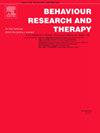建立创伤后应激障碍情绪调节的扩展过程模型。
IF 4.2
2区 心理学
Q1 PSYCHOLOGY, CLINICAL
引用次数: 0
摘要
情绪调节是创伤后应激障碍(PTSD)领域日益关注的一个话题。尽管该领域在这一领域做出了集中的努力,但研究并没有与一般情绪调节文献的进步相匹配,这些文献提出了更全面的模型来理解个体如何识别和回应情绪。在研究创伤后应激障碍的情绪调节时,本文使用Gross(2015)提出的扩展过程模型(Extended Process Model)回顾了文献的现状。考虑到情绪知觉、信念、情绪调节策略(在选择、使用灵活性和可用策略方面)和策略,讨论了这些结构如何帮助我们理解创伤后应激障碍的发病机制,并确定了需要进一步研究的领域,包括评估文化的作用和改进情绪调节结构的测量。讨论了情绪调节文献对PTSD治疗的临床意义。本文章由计算机程序翻译,如有差异,请以英文原文为准。
Developing an extended process model of emotion regulation in PTSD
Emotion regulation is a topic of growing interest in the field of post-traumatic stress disorder (PTSD). Despite the field's concentrated efforts in this area, the research has not matched advancements in the general emotion regulation literature, which have proposed more holistic models to understanding to how individuals identify and respond to emotions. In looking at emotion regulation in PTSD, this paper reviews the current state of the literature using the Extended Process Model proposed by Gross (2015). Considering emotion perception, beliefs, emotion regulation strategies (in terms of choice, flexibility of use, and repertoire of strategies available), and tactics, it discusses how these constructs help us understand the pathogenesis of PTSD and identifies areas in need of further research, including assessing the role of culture and improving measurement of emotion regulation constructs. Clinical implications of the emotion regulation literature for PTSD treatment are discussed.
求助全文
通过发布文献求助,成功后即可免费获取论文全文。
去求助
来源期刊

Behaviour Research and Therapy
PSYCHOLOGY, CLINICAL-
CiteScore
7.50
自引率
7.30%
发文量
148
期刊介绍:
The major focus of Behaviour Research and Therapy is an experimental psychopathology approach to understanding emotional and behavioral disorders and their prevention and treatment, using cognitive, behavioral, and psychophysiological (including neural) methods and models. This includes laboratory-based experimental studies with healthy, at risk and subclinical individuals that inform clinical application as well as studies with clinically severe samples. The following types of submissions are encouraged: theoretical reviews of mechanisms that contribute to psychopathology and that offer new treatment targets; tests of novel, mechanistically focused psychological interventions, especially ones that include theory-driven or experimentally-derived predictors, moderators and mediators; and innovations in dissemination and implementation of evidence-based practices into clinical practice in psychology and associated fields, especially those that target underlying mechanisms or focus on novel approaches to treatment delivery. In addition to traditional psychological disorders, the scope of the journal includes behavioural medicine (e.g., chronic pain). The journal will not consider manuscripts dealing primarily with measurement, psychometric analyses, and personality assessment.
 求助内容:
求助内容: 应助结果提醒方式:
应助结果提醒方式:


